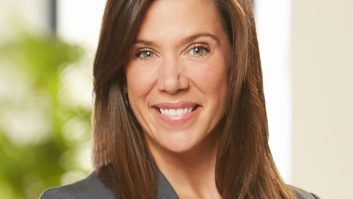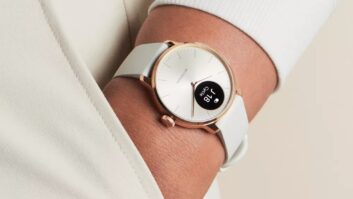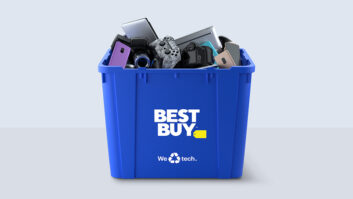LAS VEGAS -Synergies between Best Buy and Musicland should save the combined retail operation $10 million to $15 million during the first year and up to $30 million the second. And by this coming holiday season, Musicland customers should notice Best Buy-influenced changes in assortment, staffing, signage and graphics.
Best Buy, which has already purchased Magnolia Hi-Fi stores and is in the process of purchasing Musicland, pending government approval, announced these expectations at a wide-ranging question-and-answer session with Wall Street analysts at the 2001 International Consumer Electronics Show held in Las Vegas earlier this month.
Led by Best Buy president/chief operating officer Brad Anderson, executive VP Wade Fenn and a group of key executives from Best Buy and Musicland, the retailer told some 75 Streeters that its overall strategy is designed to put the chain in the forefront of the digital wave.
Best Buy anticipates dominating the devices, connectivity and entertainment markets-expanding its market share in gaming, large-screen and projection TVs, and wireless products, while offering consumers more customization and choice.
Musicland makes a great target-package to deliver digital media, said Fenn about the soon-to-be-acquired retailer, which he said holds a 20-25 percent content market share and 30-35 percent breaking artists market share.
Through Musicland, Best Buy can gain access to a different customer and the opportunity for the “convenience sale” in mall stores, as well as small-market locations. Traditionally, said Fenn, Musicland has done a better job of attracting women and mall-shoppers than Best Buy.
Units such as Musicland should help Best Buy in its marriage of music software and hardware. “We plan on being competitive with other mall locations,” said Fenn, “while our [Best Buy] superstores maintain sharper pricing that doesn’t compete with our mall locations.”
In its mall-based stores, Best Buy plans to attract a youthful customer, 15 to 25 years old. “That is where the digital revolution is going to take place,” the VP said, “and we need brand distinction from Best Buy to go after [that customer].”
Asked by analysts about the Musicland and Magnolia purchase at a time retailing sits on a possible roller-coaster ride downward, Anderson said it was critical to make the acquisition move now.
“In the next two years, the rules are going to change,” the Best Buy executive said. “What consumers will purchase in games and music will determine what hardware will sell three to five years from now.” And being in the forefront of this evolution as a team is part of Best Buy’s strategy to make digital happen.
Anderson admitted that Musicland sales should be off next year, due mainly to a decline in CD movement. At Best Buy stores, he expects to expand space for portable devices, which offer high traffic and high sales per square foot. At the same time, Best Buy stores have scaled back on furniture and replaced some home office SKUs with entertainment products.
“Desktop will be weak in the first half,” said Fenn about the home office category. “We should see a double-digit decline in units in the first half. But notebook growth will offset the drop in PCs, and PDA sales will be explosive.”
As for major appliances, Fenn said Best Buy “has no intention of leaving the business. We have to execute differently to help profits,” he said about the category, but exact strategy details remain down the road.
Prior to the meeting, Best Buy shepherded analysts on a tour of the CES convention center to highlight key products and technologies affecting the CE industry and Best Buy over the next two to three years. In conjunction with the tour, Best Buy said that major CE trends for 2001-03 include:
- Distribution of information, technologies, services and entertainment to customers and products.
- Choice and customization for consumers based on personal activities and lifestyles.
- Convergence and continuous product improvement based on improved technologies and a better understanding of customer needs.












